THIS WEEK: With new creative teams on Batman and Justice League, we look at where DC’s most prominent titles are and what they say about the overall line.
Note: the reviews below contain spoilers. If you want a quick, spoiler-free buy/pass recommendation on the comics in question, check out the bottom of the article for our final verdict.
 Batman #88
Batman #88
Writer: James Tynion IV
Artist: Guillem March
Colorist: Tomeu Morey
Letterer: Clayton Cowles
The new run of Batman, as written by James Tynion IV, is now on its third issue and second artist, and a picture of its ambitions has started to emerge. This run, like the one just launched on Justice League (which we’ll get to in a few minutes), is taking a meat-and-potatoes, or back-to-basics, sort of approach, with a healthy dose of shared universe continuity tied up in it. And it is, perhaps, indicative of where DC Comics’ monthly (or in this case twice-monthly) publishing line is at right now as a whole.
There is talk all throughout the comics world of a coming shake-up at DC, talk that has even been reported on this site. That talk has been backed up by publishers Dan DiDio and Jim Lee doing things like teasing a new generational timeline at comics events, along with cryptic musings about what it could mean for the future. The details are still foggy and obscured, but what has essentially emerged is an idea that DC Comics wants to create a headline-grabbing jumping on point for new and lapsed readers by offering a more modern take on its long-time superhero characters, and it’s all likely to begin toward the end of this year or early next (although pieces of it have started to crop up on the pages of the publisher’s stories, most notably in last month’s Wonder Woman #750).
To make way for all this newness, we’ve seem some of the bigger things happening at DC start to wrap up, including the run that preceded this one on Batman, which was a deep, Russian novel-esque (for better or worse…depending on your mood) character study by Tom King. That run did a lot for Batman and his world, coupling him (seemingly more so than ever before) with Catwoman, murdering Alfred, and making ol Bruce just a little bit vulnerable. This young run, by comparison, is far more interested in setting up devious plans by Batman’s rogues gallery, and giving us as the audience a chance to fret for a bit before watching Batman knock those plans down (presumably) — at least that’s how it seems through three issues.
In this chapter, specifically, the nature of the villainous plans becomes clearer, and it’s a fairly interesting concept, the sort one might have found back in the day in a later episode of Batman: The Animated Series. The basic plot is this: some years ago, four of Batman’s foes teamed up to do…something (the nature of that is not yet clear), and that something was setup by a mystery person called The Designer, who billed it as the perfect crime. We don’t know much more past that, other than said crime targets Bruce Wayne, and the four involved villains are Penguin, Joker, Riddler, and Catwoman (draaaaamaaaaa!). At the same time, Deathstroke and a bunch of other mercenaries are roaming around Gotham stirring up some bat guano, as it were.
This is all fine. It lends itself to plenty of Batman basics. Villains being villains, Batman punching the villains, a mystery predicated around misdirects. The story so far has seen it raining in Gotham basically non-stop (the water table in that city has to be insane), Batman playing with new toys, and plenty of punching. It is as basic of a Batman story as one could get, the type of thing that a kid with access to an above average number of action figures would concoct on an after-school afternoon. It’s fun, it’s Batman, it’s superhero comics, etc.
At the same time, it’s also doing a lot of work toward a line-wide goal that DiDio in particular has talked about as of late: this is a run aimed at fostering a sense of shared universe continuity in DC’s books in a coherent way that creates an added layer of meaning for readers of this monthly periodical format. As such, this run started with a teaser in King’s last issue, wherein The Joker noticed Superman had revealed his identity and vaguely threatened to force Batman to do the same. Alfred dying in the last run has landed Lucius Fox in the Batman support role; and the Bat-Cat coupling has layered on deep character motivations and challenges for Catwoman, centered around having collaborated with the other villains years ago when her and Bats weren’t so Bat-Catty.
This, to me, is all an excellent summation of the current state of all of DC’s superhero comics, coming out amid barely obscured plans to upend all of them. They are moving back to basics while at the same time building that aforementioned sense of a shared universe. Whether you like this is, of course, totally subjective, and historically, some return to the mean has followed experimental creative excursions with these long-time licensed IPs, which is what I myself tend to prefer. The weird thing right now, however, is that what came immediately before this was a back-to-basics initiative. It was DC Rebirth, and it was all about building characters up in familiar ways within a shared universe. Doubling down like that creates a net feeling in this run and Justice League (we’re almost there!) that’s a bit repetitive, like watching someone tread water without moving in a pool.
All of that said, I certainly don’t hate it. Both of the books I’m writing about this week have absolutely exceptional artwork, with more top-tier art on the way (look for Jorge Jimenez to draw this Batman title soon), but I can’t sit here and say that this is a comic that ranks as a must-read story for anyone aside from avowed fans of Batman, which I suppose is more than enough people to keep this title among the best-selling in all of comics while the rest of us are over here wondering about what’s next.
Verdict: Browse
 Justice League #40
Justice League #40
Writer: Robert Venditti
Artist: Doug Mahnke
Inker: Richard Friend
Colorist: David Barron
Letterer: Tom Napolitano
I have less to say about Justice League #40 than I did Batman #88, largely because it’s only published one issue versus three. I do think, however, that the spirit of the two comics is essentially the same. It’s all very familiar, it’s all very high on action, and it’s all rendered with exquisite art. A Daxamite falls from space, a fight ensues, and a larger threat is foreshadowed. There’s a big splashy set piece where Wonder Woman uses her shield, Superman uses his heat vision, and Green Lantern saves the day with a construct.
So yeah, the back-to-basics approach is full-go here, as well. So too is the push for shared continuity, with a mention of Superman’s identity reveal, The Flash struggling with his speed powers, and Batman having lost Alfred (although there’s a weird scene here where we see Alfred on a computer monitor, which can only lead me to surmise it’s auto-pilot because his death is mentioned like three pages later). Like Batman, however, this run seems to be thoroughly uninterested in exploring anything new.
There’s generally two types of Justice League runs. The first sort of encompasses everything happening with the main DC Universe, giving us a flagship title filled with the most pressing threat to the world. These types of runs (Grant Morrison, Geoff Johns, Scott Snyder, etc.) lead into events and shake up status quos. This doesn’t quite feel like that, and a big part of the reason why is that when Snyder’s last issue ended just one week ago, there was a teaser for the next big project from him and artist Greg Capullo. Essentially, that one in-house tease undercut the stakes for this comic.
Still, Venditti, Mahnke and team make the most of the opportunity to play with these toys, much like Tynion and his collaborators are doing over in Batman. One almost gets the feeling from this comic that the idea here is to build everything back up as much as possible before that teased Snyder/Capullo projects comes along to rip it back down, which seems all the more likely since so many of the big bads set up during that run are still kicking around in other books, threatening everything and everyone and the multiverse, etc.
Like Batman, this is a comic that obviously has a high production value and lots of care going into it, but also like Batman, there’s nothing entirely essential about this run for DC Comics fans that aren’t specifically long-time and avowed readers of Justice League comics. In closing, I should also note that there exists the distinct possibility that the superhero product at DC is taking less chances now that the publisher has Black Label, which is essentially an entire imprint set up for creators to take big chances with the characters. Incidentally, Black Label is also an imprint I find myself anxiously awaiting more each month.
Verdict: Browse
 Round-Up
Round-Up
- This was kind of a down week for DC offerings, at least for those that I most enjoy. I am starting to find myself looking forward to Justice League Odyssey, which has turned into just the most bonkers sci-fi book DC is publishing. It’s kind of New Gods plus Time Masters comic, with Jessica Cruz as the constant protagonist. It’s different in a good way.
- Lois Lane #8 is really pulling some great Greg Rucka deep cuts, doing so in a way that makes me wonder if when this mini-series wraps up, the writer won’t move on to a new Checkmate comic or something similar.
- I don’t always like when comics do a more, more, more kind of thing with their scope, pulling in an increasing number of characters just for the sake of it — but I am liking exactly that with Young Justice, which is essentially building its own kind of Legion of Super-Heroes the myriad of under-served sidekick and legacy characters that have been benched for a good long while at DC.
- Finally, I’m always game for DC Comics’ quarterly (I think that’s right) anthologies, which give rising creators a chance to play with their classic characters. This week’s Crimes of Passion #1 was one of the better DC anthologies in recent memory. I highly recommend it, with my favorite stories by those by Steve Orlando and Greg Smallwood; Stephanie Phillips and Riley Rossmo; Sina Grace and Mike Norton; Mat Groom and Anthony Spay; and Ram V. and John Paul Leon.
Miss any of our earlier reviews? Check out our full archive!



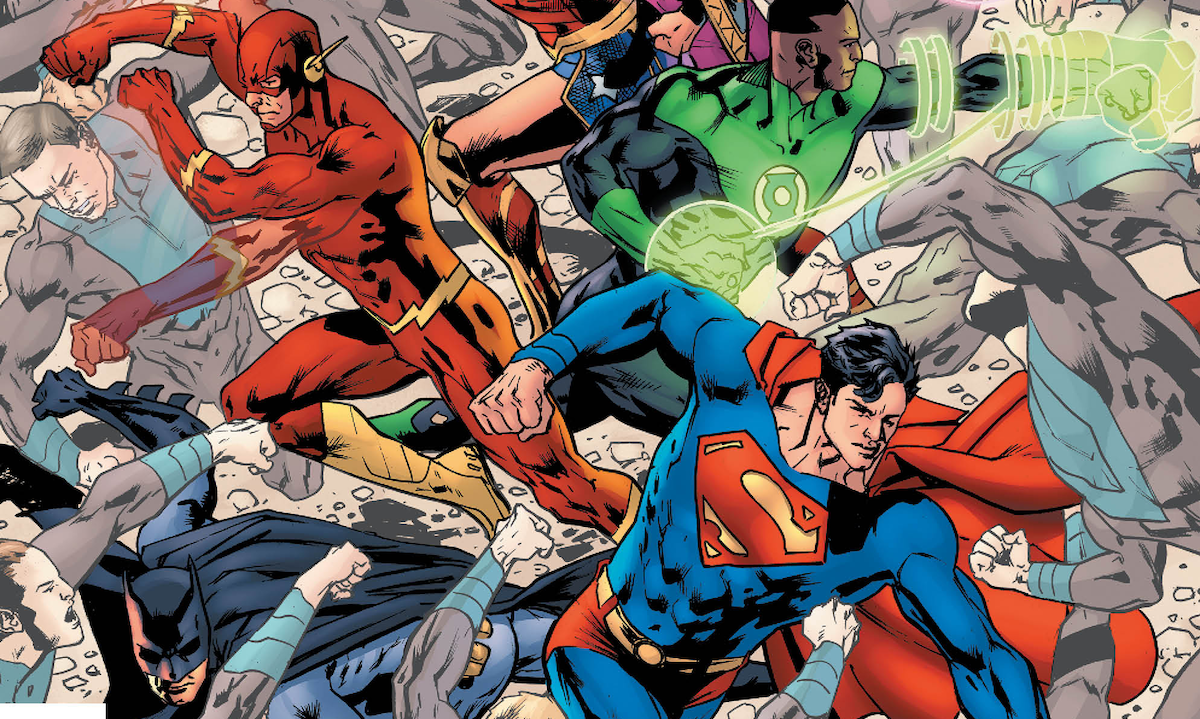
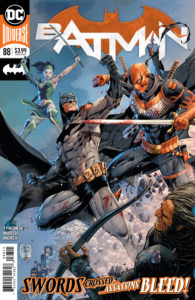
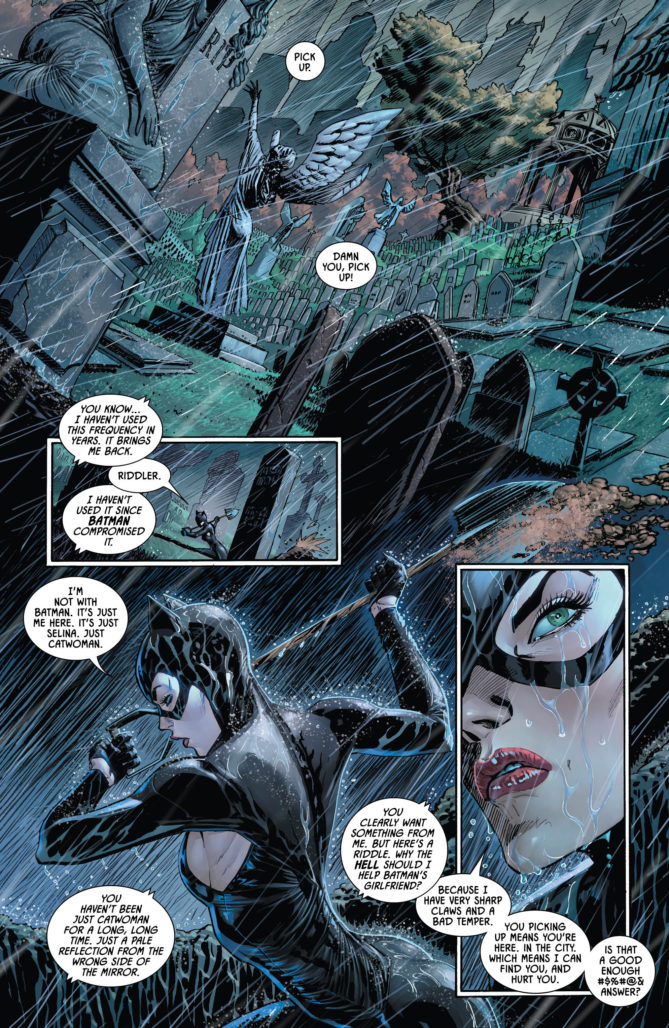
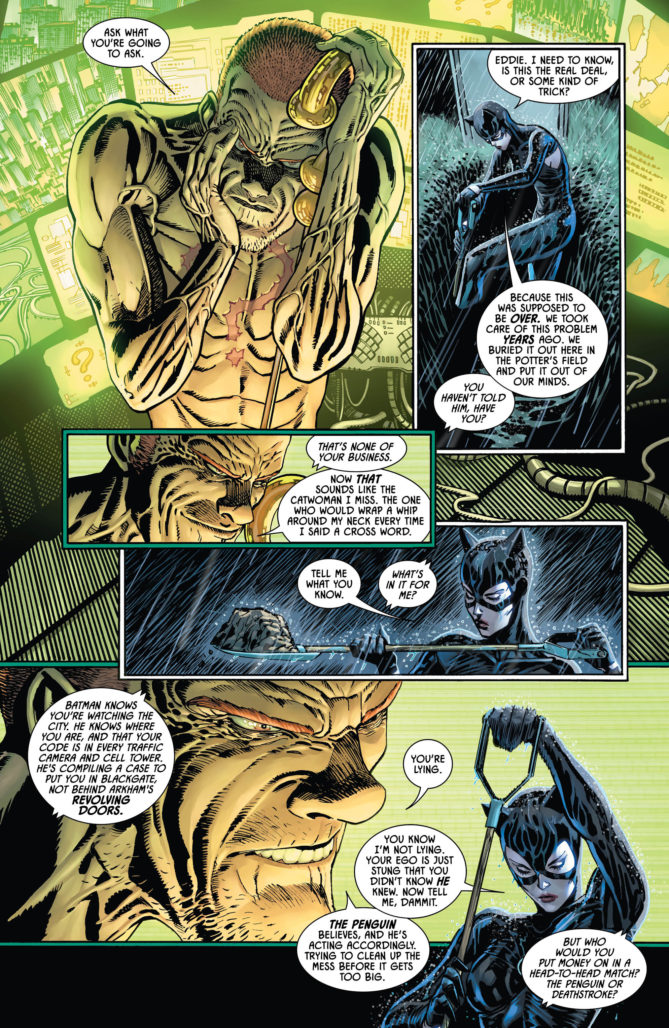
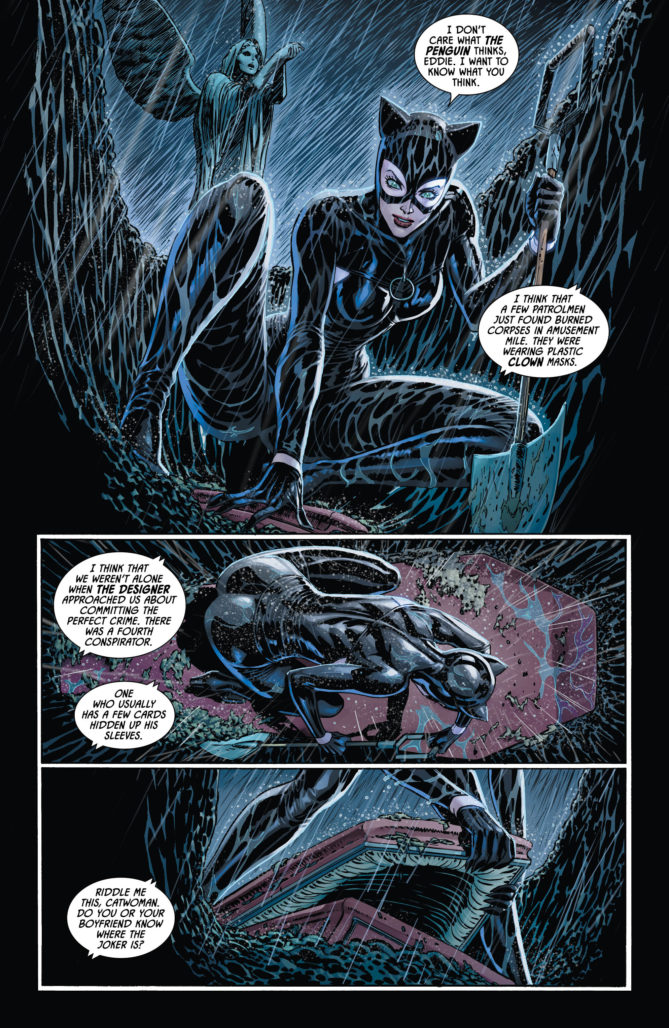
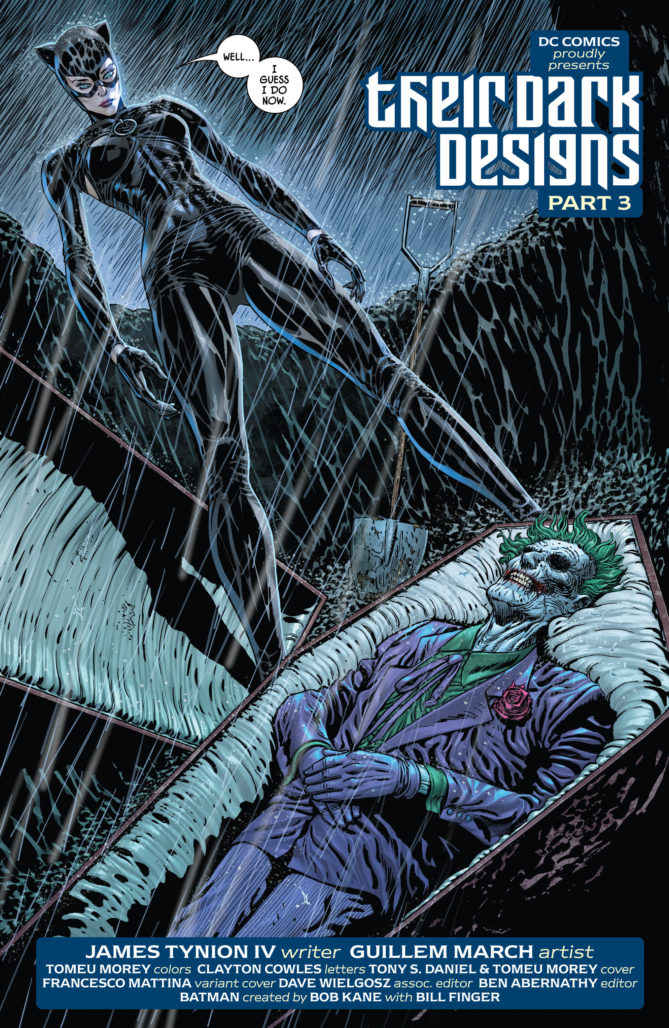
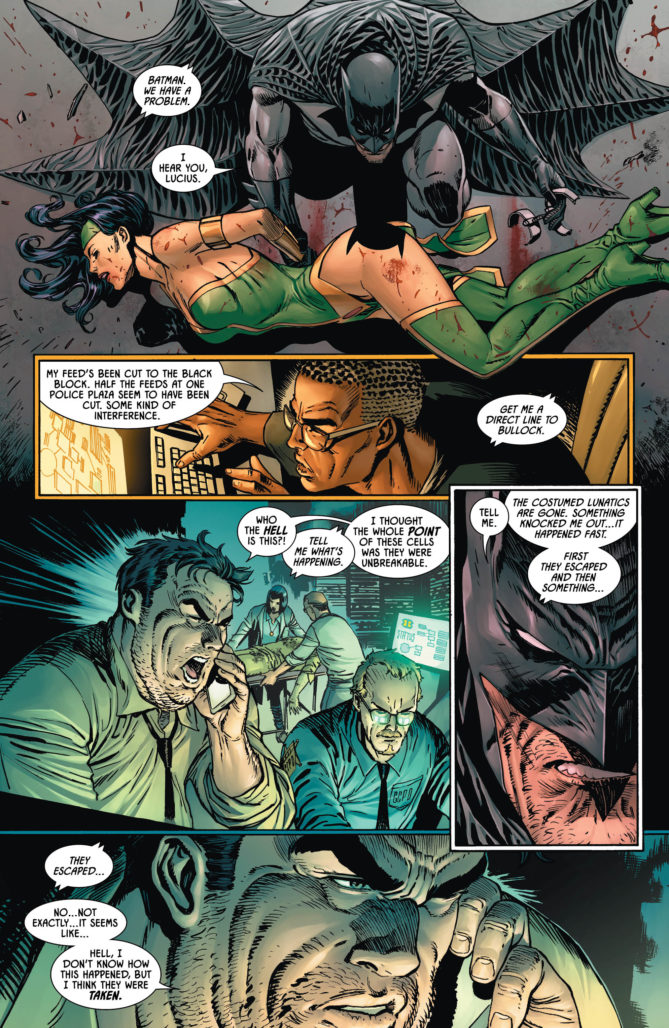
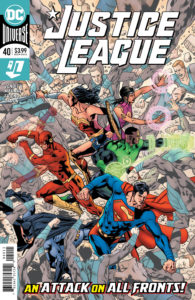
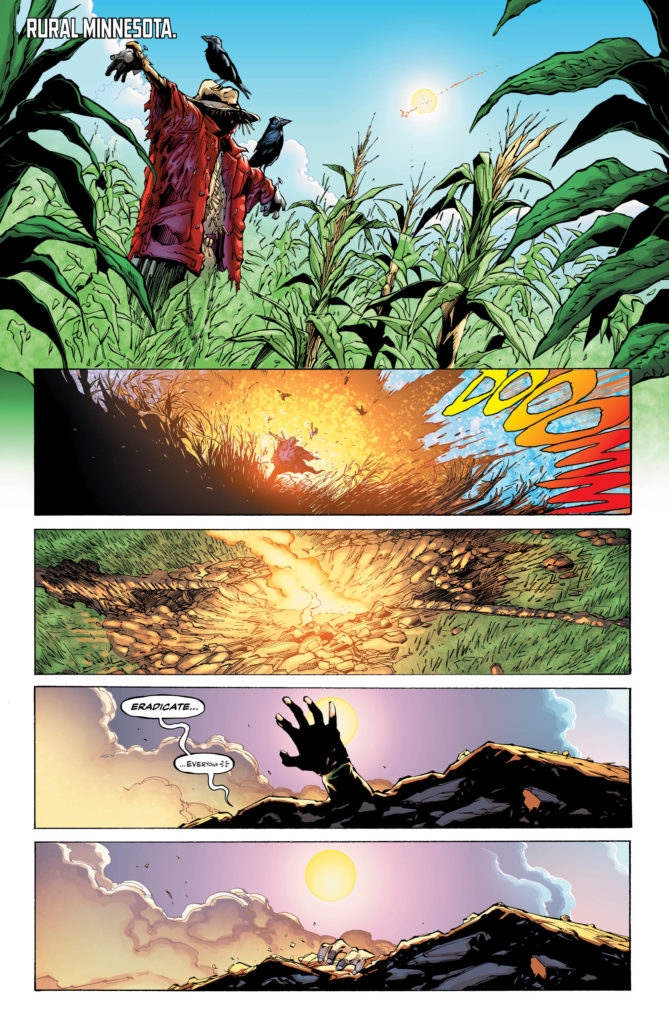
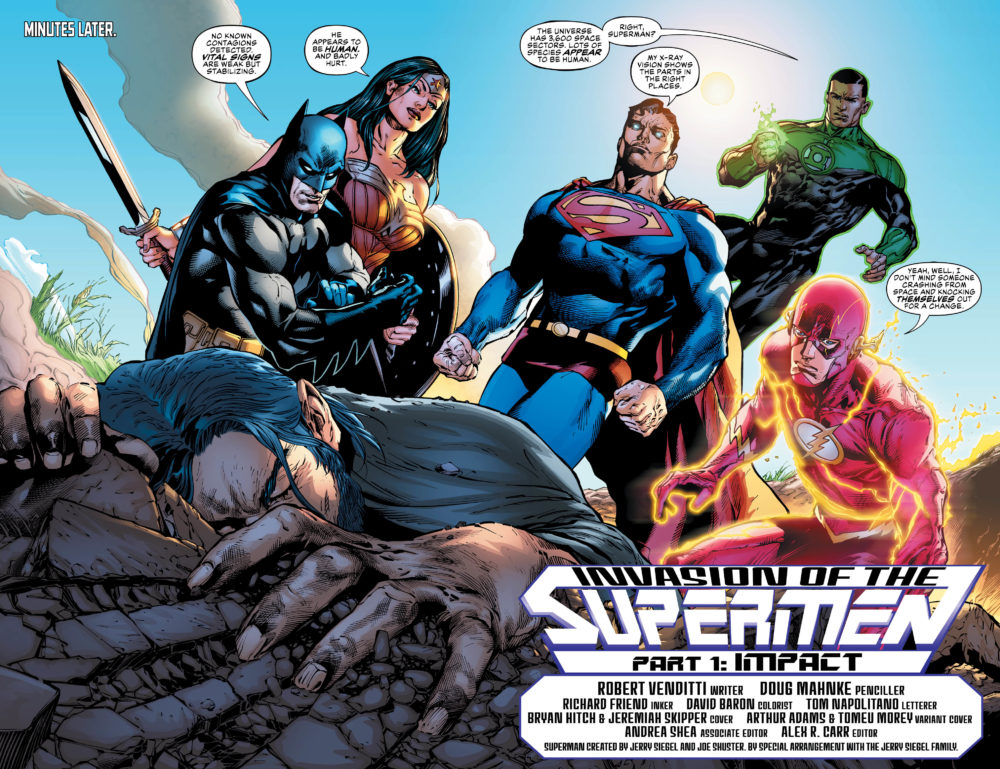
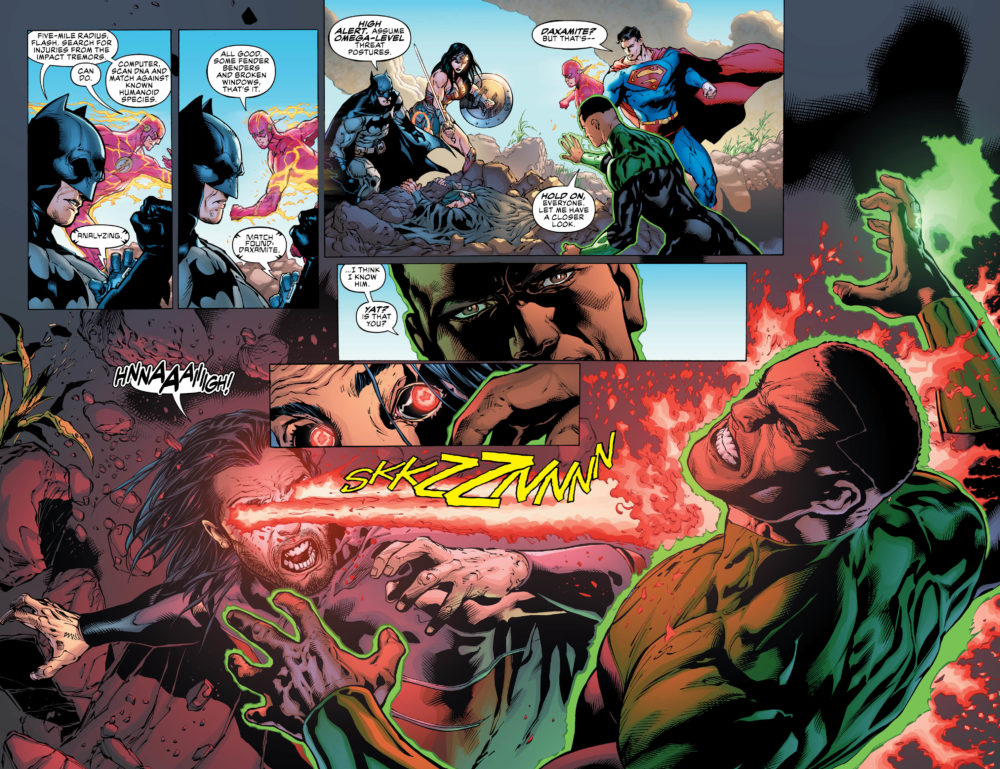
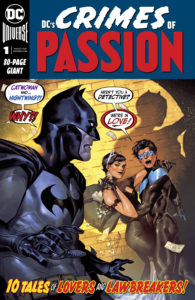
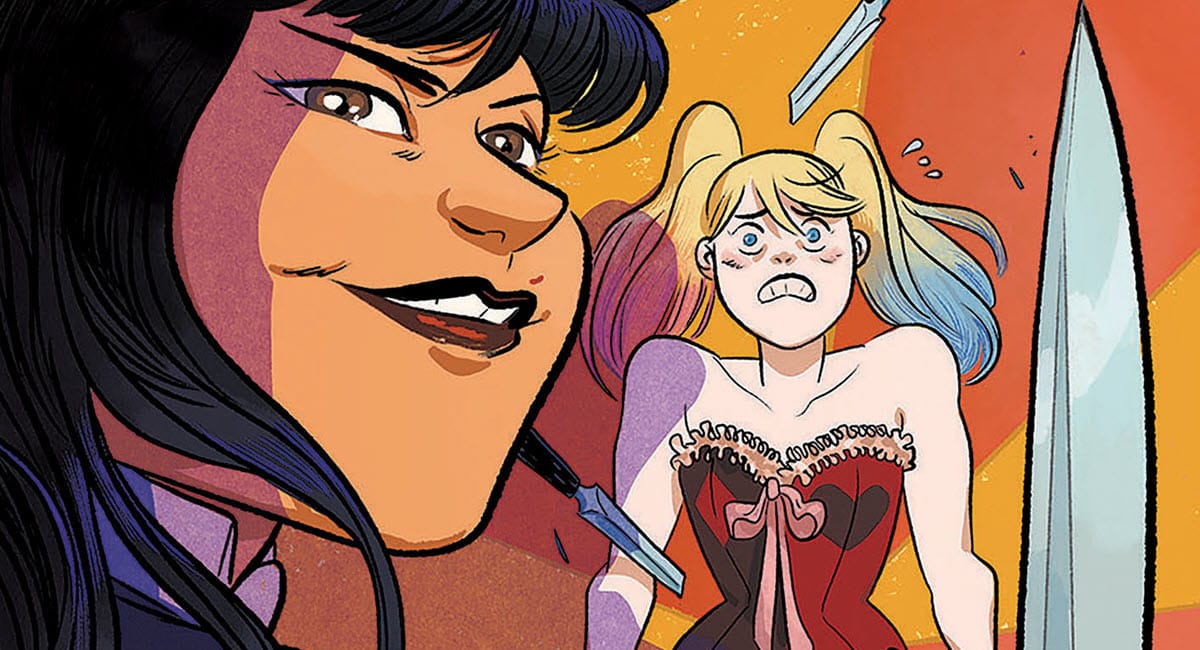

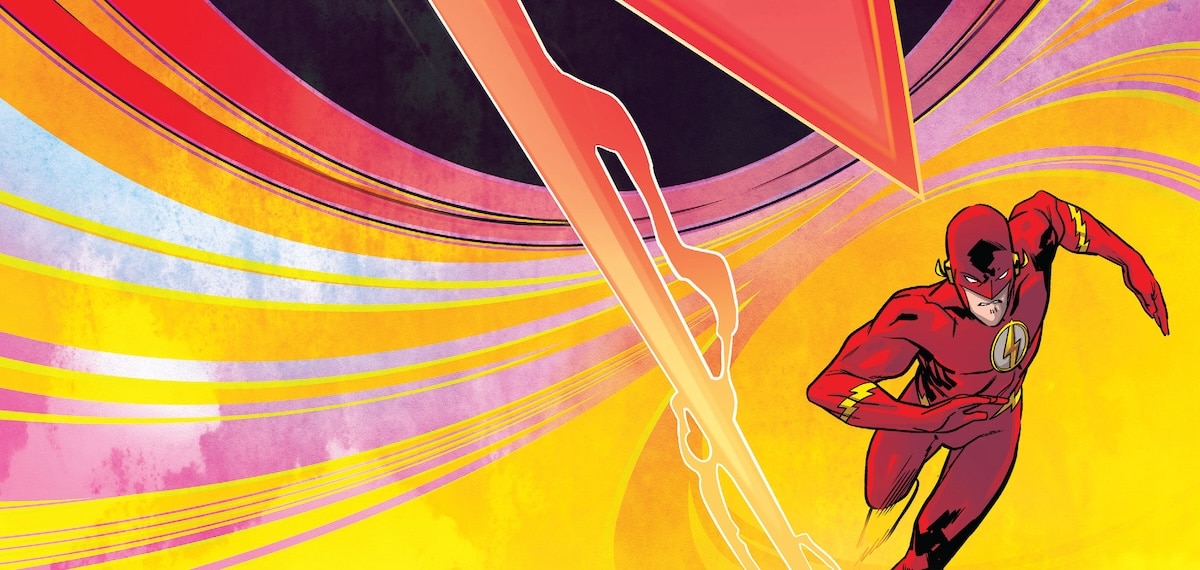




I haven’t read Justice League yet, but I don’t mind runs that feel low-key. In fact, I prefer them. I’ve never been fond of the seemingly endless sagas in superhero comics (both of those books’ previous runs being perfect examples, though Kong’s Batman being the more obvious one). I’m one of those readers who mourns the lack of stand-alone issues, two-parters or three-parters these days. I appreciate the economy of storytelling in those stories, free of the bloat common in the longer sagas (or at least drastically reduced).
Comments are closed.